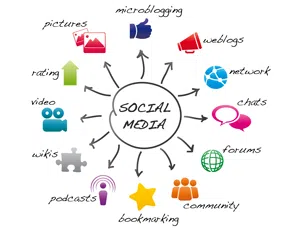How to use a combination of push promotion and social media interaction to attract new customers.
Have you ever heard the terms push marketing or pull marketing and wondered what they mean? Push marketing is the traditional method of pushing your company's sales or promotional message out to a mass audience using methods such as direct mail, newspaper ads, billboards, radio, and television. You control the message and how, when, and where the customer sees it. Companies try to target their ideal customers with the hope that a percentage will want their products or services at the exact time that the message arrives. But consumers now are filtering traditional push media by using tools such as DVRs, satellite radio, and email blockers; so companies have to adapt to this consumer behavior by also employing pull marketing strategies.
With pull marketing, the customer is in control. They pull your message in themselves when they are interested in learning more about the best products and services for their needs. You can apply pull marketing strategies by offering useful information and resources to draw people to your company Web site and by interacting with customers and potential customers through blogs, social networking Web sites, bookmarking Web sites, media-sharing Web sites, and other tools. With pull marketing, you create interest in your company or products by offering a solution or other information that will attract customers and motivate them to actively receive the message.
A key difference between push and pull marketing is that push marketing is a one-way communication street, whereas pull marketing — also known as social media marketing — is fully interactive. By participating on social media sites such as Twitter and Facebook, you can become part of the communities where your ideal customer hangs out and builds relationships. A primary goal of social media marketing is the development of trust and perceived value.
You may be thinking, "I don't see how being on Facebook or Twitter will sell anything" and, to an extent, you're right because social media marketing is usually an indirect road to sales. Although promotions can generate an immediate response, primarily, social media marketing creates visibility for your company so that users will remember your name when they need your services. The essential concept is that social media marketing drives brand awareness, which will later translate into sales.
You can target your audience by their choice of a community, their interests, and the way they use the social site. Participating in these sites can send potential customers to your business through "word of mouse" referrals from members of the online community. Think about how you get referrals offline — not only from customers that you have done work for, but also from people that like and trust you as a person — friends, church members, networking groups, players on your softball team, or your golf buddies. Social media provides the platform to develop similar relationships and referral opportunities online.
There are three categories of social media:
- Publishing information for others on your blog, other relevant blogs, microblog tools such as Twitter, Yahoo Answers and other forums, and sites such as Squidoo, Google Knol, and YouTube. You could publish articles, tips, videos, T.V. commercials, coupons, press releases, product reviews, and much more. Encourage your customers to publish reviews on your Web site, your blog, and other consumer review sites such as Google Local, Yelp, and Citysearch.
- Sharing content that you find valuable via news, bookmarking, or voting sites such as Digg, Reddit, Stumbleupon, and Del.icio.us. It is important to promote other people's content, as well as your own content, because that helps to create a respected profile. Once you have a respected profile, you can ask other key users to check out your new content.
- Networking and interacting with people on sites such as Facebook, MySpace or LinkedIn. Build the most complete and keyword-rich profile that you can. Develop a Facebook Page, which is a customizable public profile for your business. These are indexed by Google providing another opportunity for your company to rank in the search engine results.
Are you ready to jump into the social media world, but not sure where you should start? First, determine what your goals are. Some common goals for social media marketing are to build brand awareness, improve search engine rankings, drive traffic to your Web site or blog, and increase sales. Second, find out where your target audience is. By doing some quick monitoring, you can get an idea of what people are saying online, and where they're saying it. Free tools such as Technorati, Google Blog Search, and Twitter Search make it easy to track relevant business and industry terms. Third, determine how much time you are willing to commit to social media marketing.
Social media is about developing relationships. Because of that you need to think of it as a commitment, not a campaign. A Facebook page, company blog, or Twitter account that's not kept up with after consumers begin to participate delivers the message that you really don't care about them.
The more active you are on a social media channel, the more likely you are to build a strong positive reputation. Ideally, you'll blog at least once a week, update Facebook at least several times a week, and Tweet every day. If you are on Twitter less than every other day, people will often stop following you. Some experts believe that the minimum you can invest to keep your content fresh and relevant is five hours a week. If that seems like too much, start out with just one tool and then increase your social media marketing workload only when you know you have the time to do it right.
Your customers are online now — go meet them!

